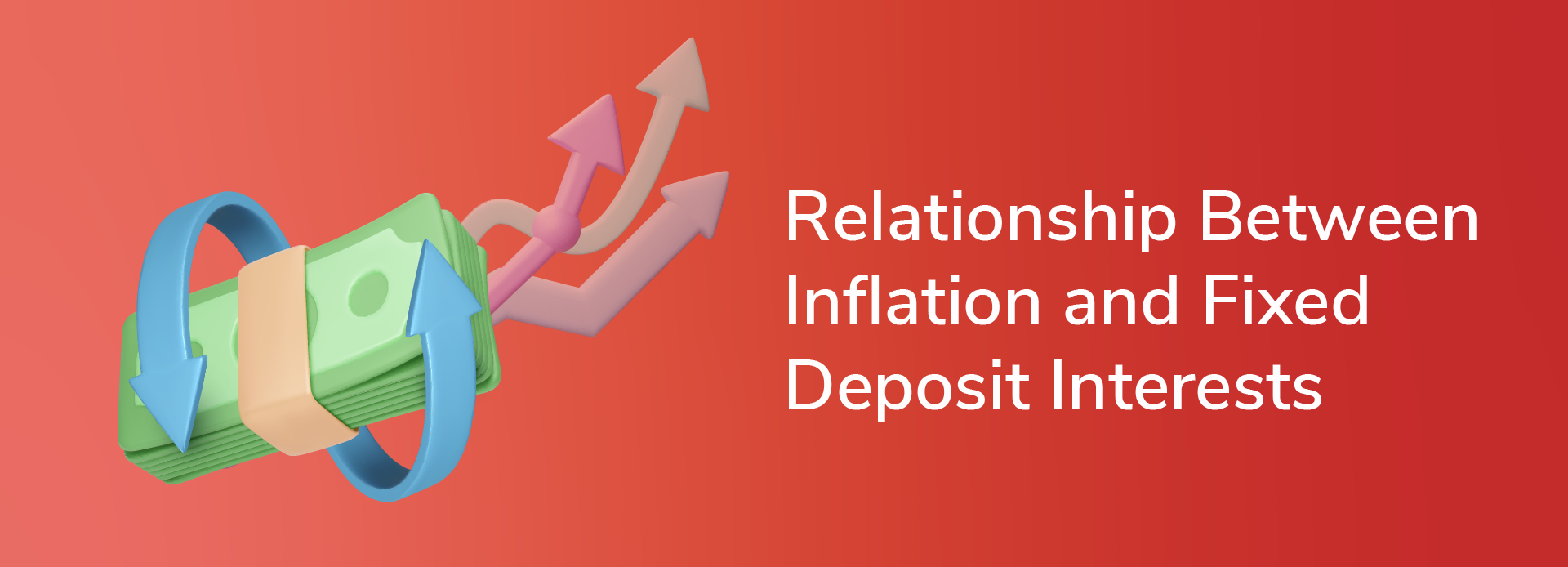
Decoding the Relationship Between Inflation and Fixed Deposit Interests
11 July 2024 | By INDIE
Fixed Deposits (FDs) are a popular investment option that offer stable and guaranteed returns. However, inflation can erode the purchasing power of your FD returns over time. Understanding this intricate relationship between inflation and FD rates is crucial to make informed investment decisions.
What is inflation?
Inflation refers to the gradual but consistent rise in the general price levels of goods and services over time. As inflation rises, the cost of living also increases. Higher inflation reduces your purchasing power, as you get less for every rupee you spend.
The Reserve Bank of India (RBI) closely monitors inflation using metrics like the Consumer Price Index (CPI) and Wholesale Price Index (WPI). The RBI aims to keep inflation around 2-6% to ensure a healthy economy.
How inflation erodes FD returns
When inflation is high, the ‘real’ value of your FD returns reduces, even if you earn the promised interest rate. Here’s how it happens.
1. Reduced purchasing power: With rising inflation, the purchasing power of your FD interest declines over time. You may earn say 7% interest on your FD, but if inflation is 10%, your ‘real return’ is negative.
2. Lower real returns: Your nominal FD returns may be fixed. But high inflation eats into the actual gains. To find your real return, subtract the inflation rate from the FD interest rate.
3. Impact of key rate changes: If inflation spikes, RBI may hike key rates like repo rate and reverse repo rate. Banks will have to pay more for funds, leading to higher lending rates. This affects FD rates.
4. Opportunity cost: When inflation is high, other investments like equities, gold or real estate may outperform FDs. The ‘opportunity cost’ of staying invested in low-yielding FDs also rises.
How to maximise FD returns against inflation?
While inflation poses a threat to fixed deposit returns, you can optimise your investment strategy with these tips.
1. Compare interest rates: Shop for the highest FD rates across leading banks, Non-Banking Financial Companies (NBFCs), and corporate FDs. An extra 1% return can add substantially to your earnings over time. INDIE by IndusInd Bank offers attractive interest rates on fixed deposits of up to 7.75% p.a., easy online FD booking, and customised savings options like auto-sweep and loyalty rewards to maximise returns.
2. Ladder maturity dates: Split your corpus into multiple FDs with staggered maturity dates. You can reinvest the funds as they mature to earn prevailing higher interest rates.
3. Opt for shorter tenures: When interest rates are expected to trend higher, invest in shorter tenure FDs of six months to one year. You can reinvest at higher rates quickly.
4. Regular payouts: Opt for the monthly or quarterly interest payout option. Park the interest in liquid funds to counter inflation better.
5. Claim deductions: Avail tax deductions by investing in five-year tax-saving FDs. This boosts your post-tax earnings from FDs.
Who is most affected by inflation and low FD rates?
Certain investor categories are more vulnerable to the impact of inflation on fixed deposit returns. These include:
Senior citizens |
Many retirees rely on FD interest for regular income. Inflation eats into their fixed earnings. |
Risk-averse investors |
Those who avoid volatility by sticking to FDs miss out on inflation-beating returns from other assets. |
Low income groups |
Inflation hits individuals from low income groups more as food and fuel costs rise. Low FD rates offer limited returns to counter this. |
Non-salaried individuals |
Self-employed professionals and business owners tend to depend on FD interest. |
Conclusion
When inflation rises, interest rates eventually catch up to counter it. However, this cycle takes time to play out. In the interim, fixed deposit investors face high inflation and low interest rates. Consider opening a digital savings account like the INDIE Savings Account for higher interest rates and an easier FD booking experience.
Disclaimer: The information provided in this article is generic and for informational purposes only. It is not a substitute for specific advice in your circumstances. Hence, you are advised to consult your financial advisor before making any financial decision. IndusInd Bank Limited (IBL) does not influence the views of the author in any way. IBL and the author shall not be responsible for any direct/indirect loss or liability incurred by the reader for making any financial decisions based on the contents and information.





